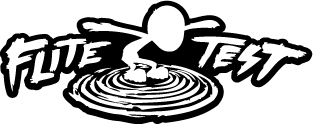Airplane Vision System
This Nootropic board allows an Arduino to capture video in real time making it suitable for a real-time vision system.
It would probably be possible to detect a typical horizon pretty simply as the sky would be bright and the ground dark.
Actually thinking about it the in image recognition could be done from an FPV feed and
Object Tracking
Here is an Arduino sketch that captures a video frame and then computes the bounding box of the brightest region in the image.
You can download the sketch here. The code first calls tv.capture() to capture a frame.
Edge Detection
The Arduino is powerful enough to do more sophisticated image processing. The following sketch captures a frame then performs an edge detection algorithm on the image. The result is the outline of the brightest (or darkest) parts of the image. This could be useful in object recognition applications or
robotics. The algorithm is quite simple, especially with a monochrome image, and is described in this survey of edge detection algorithms as “Local Threshold and Boolean Function Based Edge Detection”.
Download the edge detection code here.
Design Files
nootropic design supports the Open Source Hardware Definition v1.0.
The Video Experimenter shield is open source hardware and the Eagle schematic/board files and Gerber files are available here.
Arduino Captures Raspberry Pi Video
 The Video Experimenter shield is an Arduino shield that lets you do all kinds of experiments with video.
The Video Experimenter shield is an Arduino shield that lets you do all kinds of experiments with video.- Overlay text and graphics onto a video signal from a camera, DVR, DVD player, VCR or any other source of composite video.
- Capture low-res video image frames for display or video processing. Give your Arduino the gift of sight!
- Perform object detection for computer vision projects.
- Decode NTSC closed captioning or XDS (extended data services) data embedded in television broadcasts.
- Works with NTSC (North America, parts of South America and Asia) or PAL (most of the rest of the world) television standards. For more info on what TV standards see the map here and this list of countries and their standards.
- Uses digital pins 2, 6, 7, 8, and optionally 9. Uses analog pin 2.
- Designed for Arduino Uno, Duemilanove and equivalents. Does not work on Leonardo or Mega (more info here).
Licenses
 |
nootropic design supports the Open Source Hardware Definition v1.0. |
 |
The Video Experimenter hardware design is licensed under the Creative Commons Attribution-Share Alike license. |
 |
Video Experimenter libraries and project examples are licensed under the CC-GNU LGPL. |
The Arduino TVout library is written by Myles Metzler and released under the MIT License.
























Log In to reply
I really am a pretty bad pilot if its any consolation :)
Log In to reply